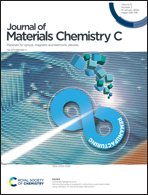Cross-linking strategies for efficient and highly stable perovskite solar cells
Abstract
Over the past few years, revolutionary progress has been made in perovskite solar cells (PSCs) with the power conversion efficiency (PCE) skyrocketing from the initial 3.8% to 26.0%. However, stability issues are still holding back their commercialization process despite tremendous efforts being devoted to the research on perovskite composition regulation, additive or surface engineering, and the exploration of interfacial or charge transport materials. Recently, the cross-linking strategies involving cross-linkable organic molecules have come to the fore due to their great potential in synchronously enhancing the intrinsic, processing, thermal, and mechanical stabilities of perovskites. Hence, in this review, the recent advances in cross-linking methods utilized in PSCs are systematically summarized, including the influencing factors on device stability, the definition and mechanisms of cross-linking strategies, and the development of various functional cross-linking molecules, among which the key elaborations consist of the molecular design and related efficacy for cross-linking strategies as well as their contributions to device performance. Finally, future perspectives and directions for cross-linking strategies are provided, which are expected to gather further research momentum in exploiting more efficient and durable cross-linking approaches to realize efficient, highly stable PSCs.

- This article is part of the themed collection: Journal of Materials Chemistry C Recent Review Articles


 Please wait while we load your content...
Please wait while we load your content...